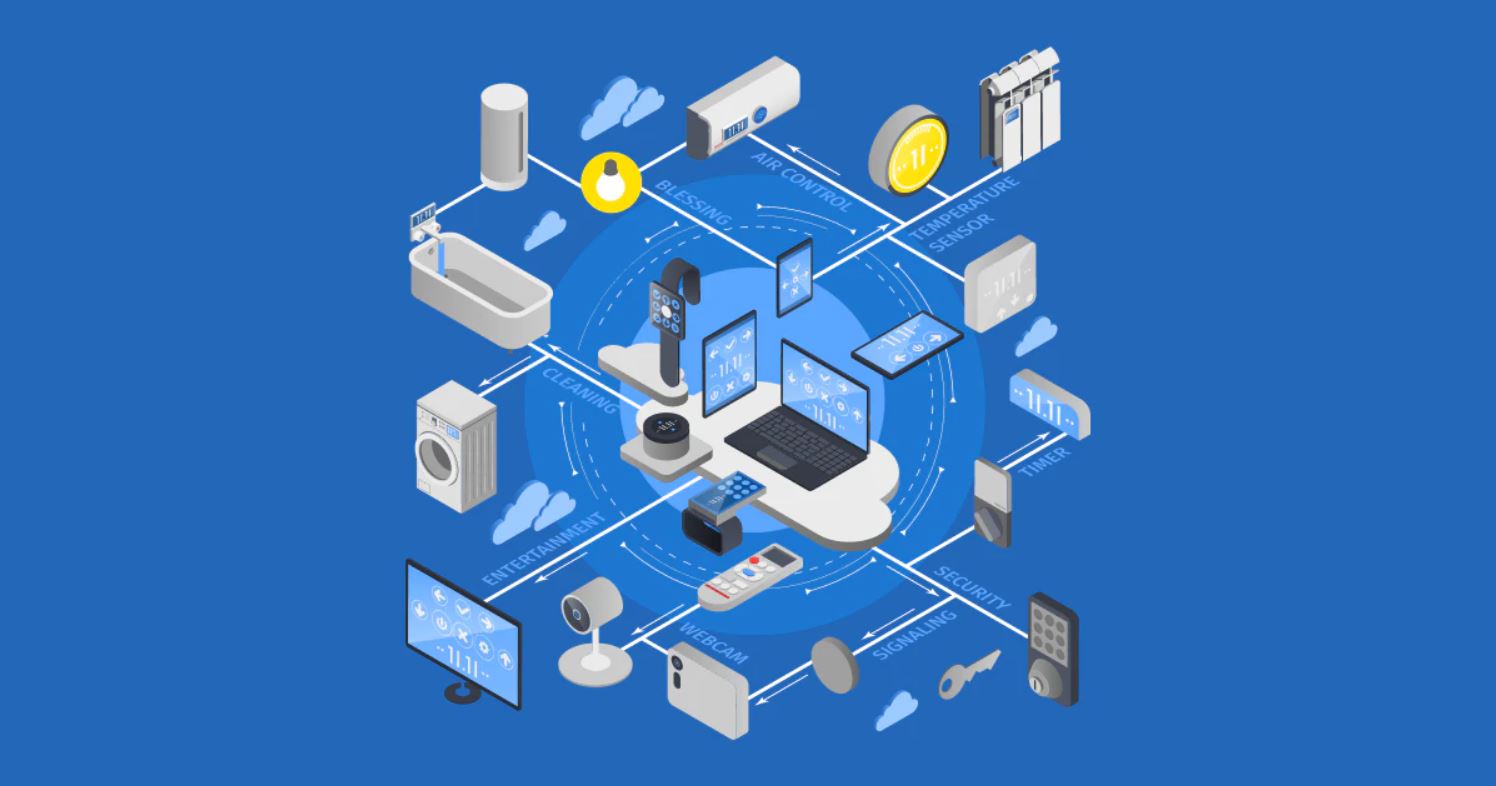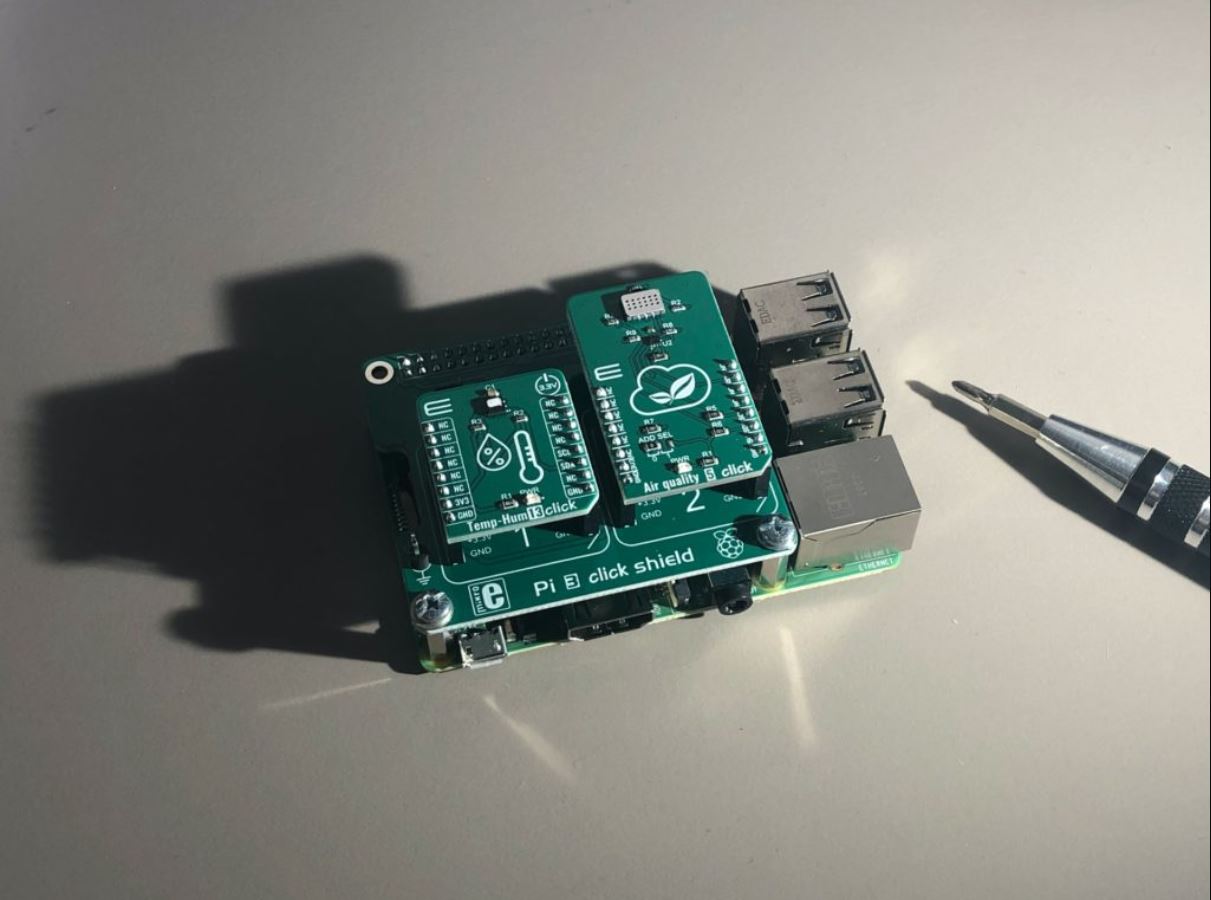Introduction
Welcome to the world of IoT hacking, where the interconnectedness of everyday devices opens up new possibilities but also presents new vulnerabilities. The Internet of Things (IoT) has revolutionized the way we interact with our appliances, cars, and even our homes. However, as these devices become more integrated into our lives, they also become susceptible to hacking.
IoT hacking refers to the unauthorized access and manipulation of internet-connected devices. From smart TVs to home security systems, anything connected to the internet can potentially become a target for hackers. The consequences of a successful IoT hack can be far-reaching, ranging from privacy breaches and identity theft to physical harm and even damage to critical infrastructure.
Understanding the intricacies of IoT hacking is crucial in order to protect ourselves and our devices. In this article, we will delve into the world of IoT hacking, exploring its definition, the risks involved, common vulnerabilities, and methods used by hackers. We will also provide real-life examples of IoT hacking attacks and offer tips on how to safeguard your IoT devices.
The Internet of Things is swiftly becoming a fundamental part of our lives, connecting billions of devices worldwide. It is estimated that by 2025, there will be over 75 billion IoT devices in use. With this rapid growth comes an increased need for cybersecurity measures to prevent and mitigate the risks associated with IoT hacking.
So, let us embark on this journey to gain a deeper understanding of IoT hacking and how we can protect ourselves in this interconnected world.
What is IoT Hacking?
IoT hacking refers to the act of gaining unauthorized access to Internet of Things (IoT) devices and exploiting their vulnerabilities for malicious purposes. IoT devices are everyday objects that are connected to the internet and can collect, transmit, and process data. These devices include smart home appliances, wearable devices, industrial equipment, and even vehicles.
Hackers target IoT devices because of their interconnected nature and the vast amount of valuable data they can access. By compromising these devices, hackers can gather sensitive information, control systems remotely, and even launch large-scale attacks on critical infrastructure.
IoT hacking can take various forms, depending on the intent of the hacker. Some common examples include:
- Identity theft: Hackers can exploit vulnerable IoT devices to obtain personal information or login credentials, leading to identity theft and financial fraud.
- Privacy breaches: Through IoT hacking, cybercriminals can gain unauthorized access to devices equipped with cameras, microphones, and sensors, violating individuals’ privacy.
- Botnets: Hackers can target IoT devices to create botnets, which are networks of infected devices controlled remotely. These botnets can be used to carry out Distributed Denial of Service (DDoS) attacks or send spam emails.
- Critical infrastructure attacks: IoT hacking can have severe consequences when industrial systems, healthcare facilities, or even transportation networks are compromised. These attacks can disrupt services, cause physical harm, or disrupt essential operations.
It is important to note that not all IoT hacking is carried out with malicious intent. Ethical hackers, also known as white-hat hackers, use their skills to identify vulnerabilities in IoT devices and help improve their security. They play a crucial role in ensuring the safety and integrity of IoT systems.
Overall, IoT hacking poses significant risks to individuals, organizations, and society as a whole. As more devices become interconnected, the need for robust security measures and user awareness becomes increasingly important to mitigate the risks and protect against potential attacks.
Understanding the Internet of Things
The Internet of Things (IoT) refers to the network of interconnected physical devices that communicate with each other and share data through the internet. These devices, also known as “smart” devices, are embedded with sensors, software, and connectivity capabilities, enabling them to collect and exchange data without human intervention.
The concept of IoT revolves around the idea of creating a seamlessly connected ecosystem where devices can interact and collaborate to enhance efficiency, convenience, and automation in various aspects of our lives. From smart homes to smart cities, IoT has the potential to transform the way we live, work, and interact with our environment.
IoT devices come in a wide range of forms, including wearable devices, home appliances, vehicles, industrial machinery, and even urban infrastructure. These devices are equipped with sensors that can monitor various parameters such as temperature, humidity, motion, and location. The collected data can be analyzed and utilized to automate processes, make informed decisions, and improve overall performance.
With IoT, it is possible to control and manage devices remotely, monitor their status, and receive real-time updates. For example, you can adjust the temperature of your home using a smartphone app, receive notifications about your fitness activities on a smartwatch, or track the location of a delivery vehicle.
The benefits of IoT are numerous and extend to various sectors, including healthcare, transportation, energy management, agriculture, and manufacturing. In healthcare, IoT devices can enable remote patient monitoring, improve the efficiency of medical equipment, and enable timely intervention in emergencies. In transportation, connected vehicles can enhance road safety, optimize traffic flow, and reduce fuel consumption. In agriculture, IoT sensors can help monitor soil conditions, humidity levels, and crop health, leading to improved crop yield and resource utilization.
However, the rapid growth of IoT also introduces significant challenges in terms of security and privacy. With the increasing number of interconnected devices, the potential attack surface for hackers expands, making IoT systems vulnerable to unauthorized access and data breaches. Hence, it is crucial to implement robust security measures, such as encryption, authentication protocols, and regular software updates, to safeguard the integrity and confidentiality of IoT data.
By understanding the intricacies of the Internet of Things, we can harness its potential while being mindful of the security implications. With proper safeguards in place, IoT can truly revolutionize our lives, making them more convenient, efficient, and interconnected.
Potential Risks and Consequences
The proliferation of Internet of Things (IoT) devices brings about tremendous benefits and convenience for users. However, it also entails potential risks and significant consequences that cannot be overlooked. Understanding these risks is crucial in maintaining the security and privacy of personal information and critical systems.
One of the primary risks of IoT devices is the potential for unauthorized access and data breaches. As IoT devices often collect and transmit sensitive information, such as personal data, login credentials, and financial details, they become attractive targets for hackers. A successful breach can lead to identity theft, financial fraud, and compromise of privacy.
Another concern is the vulnerability of IoT devices to malware attacks. Hackers can exploit security flaws in IoT devices, turning them into botnets or using them as entry points to infiltrate other connected systems or networks. These botnets can be used for large-scale Distributed Denial of Service (DDoS) attacks, overwhelming targeted servers and disrupting services.
Furthermore, compromised IoT devices can pose risks to critical infrastructure and public safety. Imagine a scenario where a hacker gains control over interconnected smart city systems, such as traffic management, power grids, or water supply. The consequences could be disastrous, leading to widespread disruptions, accidents, and even physical harm.
Additionally, IoT devices often have limited or outdated security measures in place. Manufacturers may prioritize convenience and cost-efficiency over robust security, leaving vulnerabilities that can be exploited by hackers. Without regular software updates and firmware patches, these devices remain susceptible to emerging threats and attacks.
Privacy is another significant concern in the world of IoT. Many IoT devices, such as smart home assistants with voice recognition capabilities or wearable fitness trackers, collect and analyze personal data. If not adequately protected, this data can be misused or sold to third parties, infringing upon individuals’ privacy rights.
The consequences of IoT hacks can be far-reaching and severe. Beyond financial losses and privacy breaches, they can also impact public safety, national security, and the functioning of critical infrastructure. The exploitation of IoT vulnerabilities can lead to widespread disruption of services, compromise of essential systems, and even loss of life in critical sectors like healthcare and transportation.
It is therefore paramount for users, manufacturers, and policymakers to address these risks proactively. The implementation of robust security measures, such as strong encryption, multifactor authentication, and secure network protocols, is essential to protect IoT devices and the data they generate. Regular security audits, updates, and patches should be part of the standard maintenance for all IoT devices.
Ultimately, the potential risks and consequences of IoT hacking highlight the necessity for a holistic approach to security and privacy, involving industry stakeholders, government regulations, and user education. By understanding and addressing these risks, we can harness the benefits of IoT technology while ensuring a safe and secure digital environment for all.
Common IoT Vulnerabilities
Internet of Things (IoT) devices, with their interconnected nature and wide-ranging functionalities, are susceptible to a variety of vulnerabilities that hackers can exploit. Understanding these common weaknesses is crucial for mitigating the risks associated with IoT devices and ensuring the security of our connected ecosystems.
One common vulnerability in IoT devices is weak or default credentials. Many manufacturers ship their devices with generic usernames and passwords, which users often neglect to change. This leaves the devices vulnerable to brute force attacks, where hackers systematically try different combinations of credentials to gain unauthorized access.
Another prevalent vulnerability is a lack of regular software updates and firmware patches. IoT devices often have long lifespans, and manufacturers may not prioritize or provide ongoing support for security updates. This leaves the devices exposed to known vulnerabilities that hackers can exploit.
Inadequate encryption protocols are also a significant vulnerability in IoT devices. Weak encryption or the absence of encryption altogether can expose sensitive data, making it easier for hackers to intercept and decipher the information being transmitted between devices or to the cloud.
IoT devices are often installed with default settings that users do not customize. These default settings can be easily exploited by hackers who are familiar with the manufacturer’s standard configurations. Furthermore, some IoT devices may have open ports or unnecessary services enabled, providing additional points of entry for attackers.
IoT devices that rely on wireless connectivity are vulnerable to unauthorized access through their wireless communication protocols. Weak or easily intercepted signals can enable hackers to intercept and manipulate the data being transmitted between devices.
Additionally, the lack of proper authentication and authorization mechanisms is a common vulnerability in IoT devices. Without robust authentication protocols, hackers can impersonate legitimate users, gaining unauthorized access to devices or sensitive information. Similarly, insufficient authorization controls can allow attackers to escalate their privileges, accessing functionalities and data that they should not have access to.
Furthermore, the sheer number of IoT devices and their diverse range of manufacturers can lead to inconsistencies in security practices and standards. Some manufacturers may prioritize convenience and cost-cutting over security, resulting in compromised devices that are more susceptible to attacks.
To mitigate these vulnerabilities, best practices include regularly changing default passwords, ensuring that all IoT devices receive timely software updates and firmware patches, implementing strong encryption protocols, and customizing device settings to align with individual security requirements. Users should also be aware of the risks associated with IoT devices and exercise caution when connecting them to networks.
Industry-wide initiatives, such as standardized security protocols and certifications, can also play a crucial role in establishing a baseline of security measures for IoT devices. By addressing these common vulnerabilities, we can enhance the security and reliability of the Internet of Things, safeguarding our interconnected world.
Methods Used in IoT Hacking
IoT hacking encompasses a variety of techniques and methods employed by hackers to exploit vulnerabilities in Internet of Things (IoT) devices. Understanding these methods is crucial in order to effectively defend against attacks and secure our interconnected devices.
1. Exploiting Default Credentials: Hackers capitalize on the common practice of using default or weak credentials by manufacturers. By identifying devices with unchanged usernames and passwords, attackers can gain unauthorized access and control over IoT devices.
2. Brute Force Attacks: Using automated software, hackers systematically attempt different combinations of usernames and passwords in order to gain entry to IoT devices. Weak or unchanged credentials are particularly vulnerable to this method.
3. Firmware Vulnerabilities: IoT devices often run on firmware, which is the software embedded into the device’s hardware. Hackers search for vulnerabilities in the firmware, such as unpatched security flaws or backdoors, to gain control over the device.
4. Man-in-the-Middle (MitM) Attacks: In a MitM attack, hackers intercept and manipulate the communication between IoT devices by positioning themselves between the device and its intended recipient. This allows them to eavesdrop on sensitive information or inject malicious commands.
5. Denial of Service (DoS) Attacks: Hackers can overload IoT devices or the network they are connected to with excessive traffic or data, rendering the device or network unavailable. This disrupts services and prevents legitimate users from accessing the devices or systems.
6. Physical Attacks: In some cases, attackers target IoT devices physically, gaining access to the internal components or interfaces. This can allow them to extract sensitive data, modify the device’s functionality, or even install malicious hardware.
7. Exploiting Interconnected Devices: IoT devices often communicate with each other, creating a network of interconnected devices. Hackers can exploit vulnerabilities in one device to gain access to other devices in the network, potentially compromising the entire system.
8. Sensor Spoofing: By employing specialized tools or techniques, hackers can manipulate the data collected by IoT device sensors. This can lead to false readings or triggers, impacting the device’s functionality or providing misleading information for further analysis.
9. Reverse Engineering: Hackers may dismantle IoT devices to analyze and understand the underlying hardware and software. This allows them to identify vulnerabilities, extract encryption keys, or modify the device’s firmware to enable unauthorized access.
10. Social Engineering: Hackers often employ social engineering tactics to deceive users into providing sensitive information or granting access to their IoT devices. This can include phishing emails, phone calls, or posing as a legitimate service provider to gain the target’s trust.
It is essential to implement strong security measures to protect against these various hacking methods. Users should change default credentials, keep software and firmware up to date, employ encryption, and monitor their IoT devices for any suspicious activities. Manufacturers should prioritize security during the design and development stages, implementing robust authentication mechanisms, regularly releasing security patches, and encouraging responsible user behavior.
By understanding the methods used in IoT hacking, we can enhance our defenses and safeguard our interconnected devices and systems from malicious attacks.
Real-Life Examples of IoT Hacking Attacks
Over the years, there have been several high-profile instances where hackers successfully exploited vulnerabilities in Internet of Things (IoT) devices, causing significant disruptions and highlighting the importance of securing these interconnected systems. Here are a few real-life examples of IoT hacking attacks:
1. Mirai Botnet: In 2016, the Mirai botnet was responsible for one of the largest distributed denial of service (DDoS) attacks in history. Hackers exploited default or weak credentials on IoT devices, building a massive botnet that targeted DNS provider Dyn. As a result, major websites and services were rendered inaccessible for millions of users.
2. Jeep Cherokee Hack: In 2015, researchers demonstrated how vulnerable IoT devices, specifically vehicles, could be. They remotely took control of a Jeep Cherokee’s entertainment system via an insecure cellular connection. This allowed them to manipulate the vehicle’s steering, brakes, and other critical functions, prompting a recall of 1.4 million vehicles.
3. Smart Home Device Vulnerabilities: Smart home devices, such as cameras and door locks, have also been targeted by hackers. In one instance, a family in the U.S. reported that their internet-connected baby monitor had been hacked. The attacker gained access to the camera, could monitor the family, and even speak through the device to the child.
4. Stuxnet Worm: Stuxnet, discovered in 2010, was a highly sophisticated malware worm specifically designed to target industrial control systems, including those in nuclear facilities. It spread via USB drives and exploited vulnerabilities in supervisory control and data acquisition (SCADA) systems. This attack resulted in physical damage to Iran’s nuclear program.
5. Malware Infecting IoT Devices: In 2018, the VPNFilter malware infected hundreds of thousands of home and small office routers and network-attached storage (NAS) devices. The malware allowed hackers to steal login credentials, conduct espionage, and even potentially render devices inoperable.
These real-life examples highlight the potential consequences of IoT hacking when vulnerabilities are exploited. They demonstrate the importance of implementing robust security measures, regularly updating software and firmware, and raising awareness about the risks associated with interconnected devices.
It is crucial for users to take proactive steps in securing their IoT devices, such as changing default credentials, disabling unnecessary features, and segregating IoT devices on isolated networks. Manufacturers must prioritize security and privacy in the design and development of IoT devices, implementing encryption, secure authentication, and regular security updates.
By learning from past IoT hacking attacks, we can strengthen our defenses and ensure a more secure and resilient IoT ecosystem.
Protecting Yourself and Your IoT Devices
In an increasingly interconnected world, protecting yourself and your Internet of Things (IoT) devices from hacking is paramount. By implementing security best practices and following essential guidelines, you can enhance the safety and privacy of your IoT devices. Here are some key steps to consider:
1. Change Default Credentials: One of the most critical steps is to change the default usernames and passwords on your IoT devices. Use strong, unique credentials that are not easily guessable to prevent unauthorized access.
2. Keep Software and Firmware Updated: Regularly update the software and firmware on your IoT devices. Manufacturers often release patches and security updates that address vulnerabilities. Enable automatic updates whenever possible to stay protected against emerging threats.
3. Secure Your Network: Ensure that your home network is secure by setting up a strong Wi-Fi password and enabling encryption protocols such as WPA2 or WPA3. Additionally, consider segregating your IoT devices on a separate network to limit potential access points for hackers.
4. Disable Unnecessary Features: Review the settings and functionality of your IoT devices and disable any unnecessary features. This minimizes the attack surface and reduces the potential vulnerabilities that hackers can exploit.
5. Implement Network Firewalls: Utilize network firewalls to monitor and control the incoming and outgoing traffic between your devices and the internet. This adds an extra layer of protection against unauthorized access and blocks malicious connections.
6. Be Vigilant About Phishing Attacks: Be cautious of suspicious emails, messages, or phone calls that may attempt to trick you into revealing sensitive information or clicking on malicious links. Avoid clicking on suspicious links and only download apps or software from trusted sources.
7. Utilize Strong Encryption: Enable encryption on your IoT devices and configure them to use secure protocols, such as Transport Layer Security (TLS) or Secure Shell (SSH), for data transmission. This ensures that your communications cannot be easily intercepted or deciphered by hackers.
8. Regularly Monitor Device Activity: Keep an eye on the activity logs and notifications provided by your IoT devices. Monitor for any unusual behavior, unexpected connections, or unauthorized access attempts. If you notice anything suspicious, take immediate action to mitigate the potential risks.
9. Invest in Security Solutions: Consider using robust security solutions, such as antivirus software, network intrusion detection systems, or IoT security platforms, to provide an added layer of defense against potential threats.
10. Educate Yourself and Stay Informed: Take the time to educate yourself about IoT security best practices and stay up to date with the latest developments and vulnerabilities. Follow reputable sources and communities that provide guidance on securing IoT devices.
By following these guidelines, you can greatly reduce the risk of falling victim to IoT hacking and protect yourself and your IoT devices from potential threats. Remember, proactive measures and security-conscious behavior go a long way in ensuring a safe and secure IoT environment.
Conclusion
The rise of the Internet of Things (IoT) has undoubtedly opened up new possibilities and convenience in our interconnected world. However, it also brings along a host of security risks and vulnerabilities that should not be ignored. IoT hacking poses significant threats to our privacy, personal information, and even critical infrastructure.
By understanding the nature of IoT hacking, the common vulnerabilities that exist, and the methods used by hackers, we can take proactive steps to protect ourselves and our IoT devices. Basic security measures such as changing default credentials, keeping software and firmware updated, and securing our networks can go a long way in enhancing the security of our devices.
Manufacturers also play a crucial role in ensuring the security of IoT devices. By prioritizing security during the design and development process, implementing strong encryption protocols, and releasing regular security updates and patches, manufacturers can safeguard their products and protect their users.
Furthermore, collaboration between industry stakeholders, government bodies, and users is essential in addressing the evolving challenges of IoT security. Standardized security protocols, certifications, and regulations can help establish a baseline of security measures and ensure consistent security practices across IoT devices.
As individuals, we must stay informed about the latest security threats, educate ourselves about IoT security best practices, and adopt a security-conscious mindset. By remaining vigilant, monitoring device activity, and promptly addressing any potential vulnerabilities or suspicious activities, we can significantly reduce the risks associated with IoT hacking.
Ultimately, securing our IoT devices and the larger interconnected ecosystem requires a collective effort. By implementing robust security measures, fostering awareness, and prioritizing security in the design and usage of IoT devices, we can harness the full potential of the Internet of Things while ensuring a safe and secure digital environment for all.

























